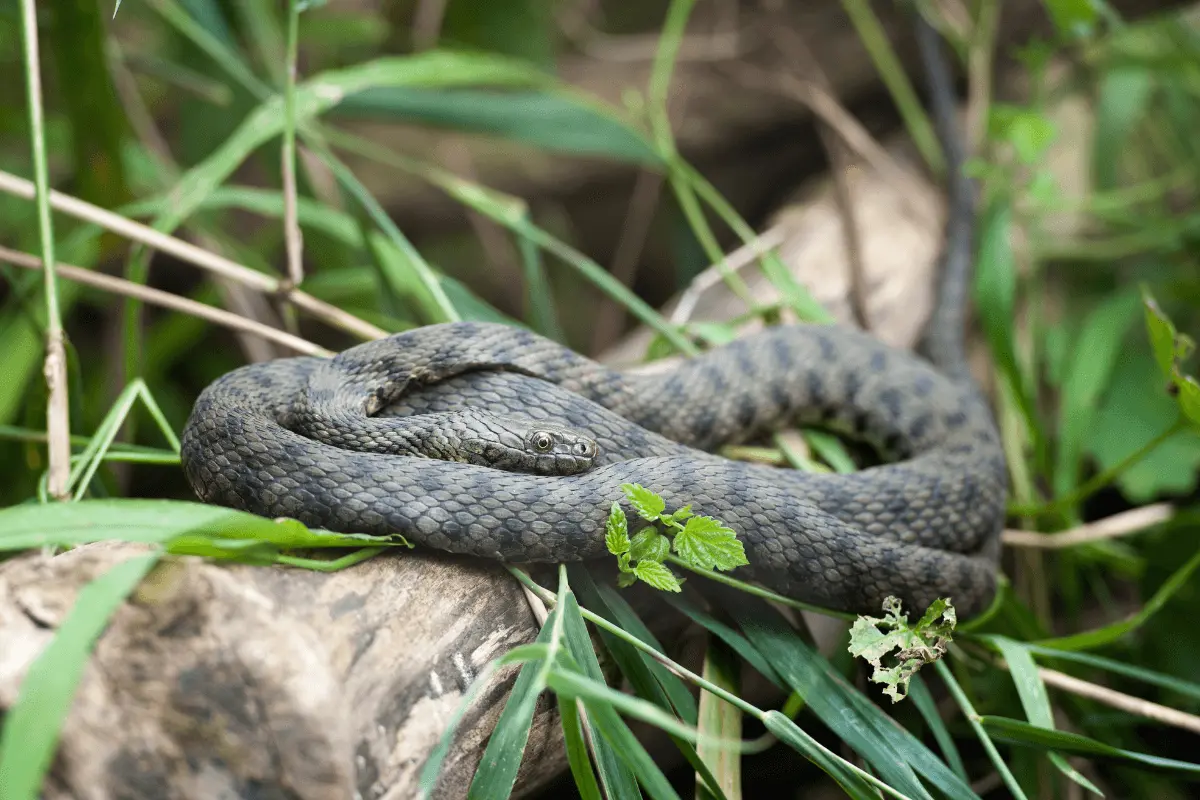There are no snakes that only eat fish, but few snakes in this world eat fish as their primary food source. Most snakes occasionally eat fish if the chance is correct, but few snakes like to eat fish. Most snakes don’t have the proper digestive system to break down sharp fish bones, and they aren’t good enough at fishing to make it a good food source. You might be interested in what snakes eat fish.
Many types of snakes prefer fish as a meal, but here are the most frequent ones:
- King Cobra
- Garter Snake
- Anaconda
- Cottonmouth
- Python
- Sea Krait
- Water Snake
- Banded Water Snake
- Boa Constrictor
- Dice Snake
- Checkered Keelback
- Ribbon Snake
- Grass Snake
In this article, we’ll learn more about snakes that eat fish. We’ll look at the different kinds and how they catch their prey.
Fish-Eating Snakes
According to Manual of Exotic Pet Practice many species of snake eat fish, including :
Garter Snake

Garter snakes are harmless, small-to-medium-sized Colubridae snakes in the genus Thamnophis. Thamnophis species range from Canada’s subarctic plains to Costa Rica. These svelte reptiles from North America have a varied diet, including fish, amphibians, and invertebrates, as their primary sources of nutrition.
They often eat small fish, especially minnows, which they catch with a quick attack in shallow water. Their skillful hunting methods include ambush and pursuit, enabling them to become proficient piscivores within the animal kingdom.
Cottonmouth Snake

Cottonmouths, often known as water moccasins, are venomous snakes native to the southeastern United States. Pit viper Agkistrodon piscivorus belongs to the Viperidae subfamily Crotalinae. Primarily fish eaters, they wait for the right moment to attack slow-moving fish like catfish and bullhead, often killed by their deadly venom. Their poison makes it easier for them to eat fish because it quickly makes the fish unable to move.
Sea Krait Snake

Sea kraits are Laticauda, poisonous elapid sea snakes. Sea kraits live in the warm seas of the Indo-Pacific region. They are good at getting around on both land and water. Incredibly, eels comprise around one hundred percent of their diet. Sea Kraits favor these fish because of the fact that their bodies are soft and they are lengthy.
Banded Water Snake

The banded water snake, sometimes known as the southern water snake, is a nonvenomous colubrid snake native to the wetlands of the Midwest and Southeast. These are harmless to humans but have an insatiable desire for fish and amphibians. Small fish, like sunfish and the odd tadpole, are their main prey. They prefer fresh bodies of water. They follow their prey or lie in wait in shallow waters, where they are ready to seize their next meal. Their camouflage is quite effective.
Dice Snake

The dice snake is a species of aquatic reptile that is non-venomous and likes to eat fish and amphibians for food. It can be found in parts of Europe and Asia. They are excellent swimmers and wait patiently for their prey to get within striking distance before capturing them with their formidable teeth. The majority of what it eats is small fish, like minnows and sticklebacks.
Checkered Keelback Snake

This non-venomous, semi-aquatic snake species is native to Asia and thrives in habitats with access to fresh water. The checkered keelback can skilfully navigate its aquatic environment, capturing fish, frogs, and tadpoles along the way thanks to its acute senses and agile body. As opportunistic eaters, they eat all kinds of small fish, like carp and other watery species, that live in their environments.
Ribbon Snake

Ribbon snakes are slender and quick-moving reptiles that can be found all across North America. They are related to garter snakes. Fish and amphibians comprise the bulk of their diet, as these animals prefer to live in wetland settings. Small fish and frogs are often part of their food. Their long bodies let them strike quickly in the water, which is great for getting fish that don’t see them coming.
Conclusion
These fascinating reptiles, ranging from water snakes to sea snakes, have adapted in numerous ways, allowing them to live and hunt successfully in aquatic environments. These snakes’ sleek bodies, specialized jaws, and acute senses make them ideal for their fish-eating diet and lifestyle.
The fantastic diversity of these remarkable reptiles can be better understood by learning about the numerous varieties of snakes that eat fish, the common prey they pursue, and their hunting strategies.
FAQs
References
Mark A. Mitchell, CHAPTER 7 – SNAKES, Editor(s): Mark A. Mitchell, Thomas N. Tully,
Manual of Exotic Pet Practice, W.B. Saunders, 2009, Pages 136-163, ISBN 9781416001195, https://doi.org/10.1016/B978-141600119-5.50010-X.
